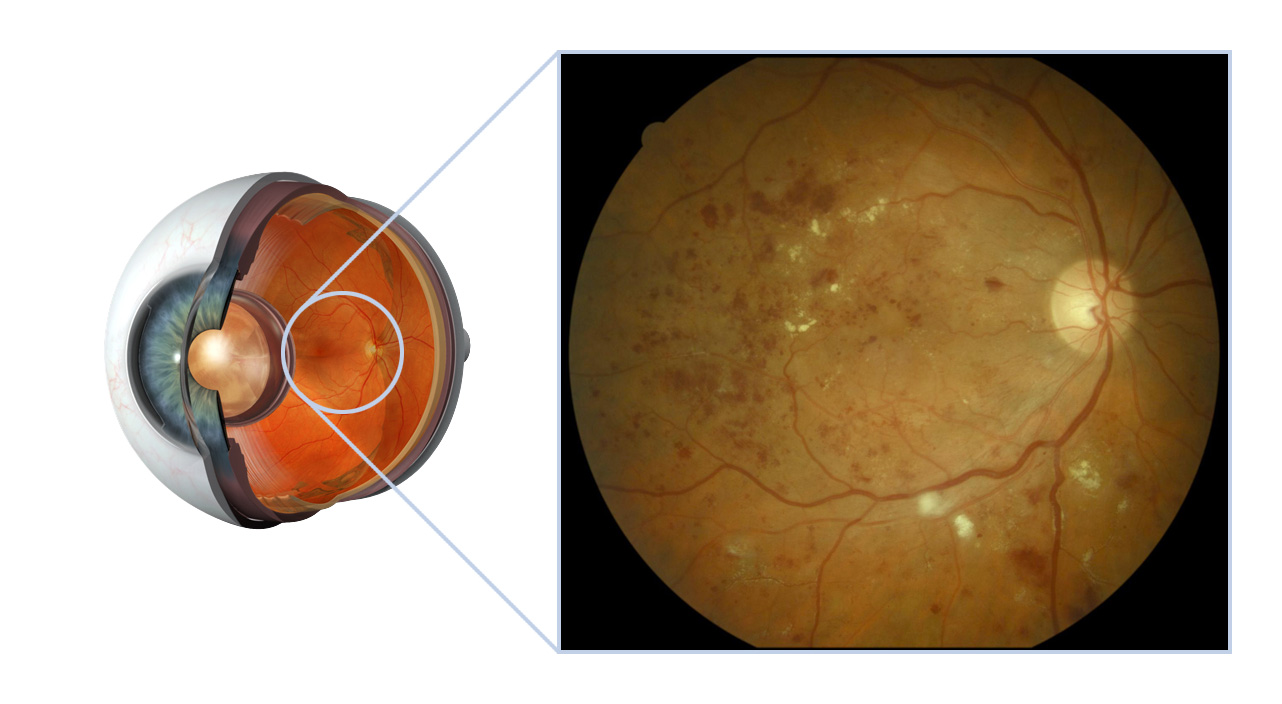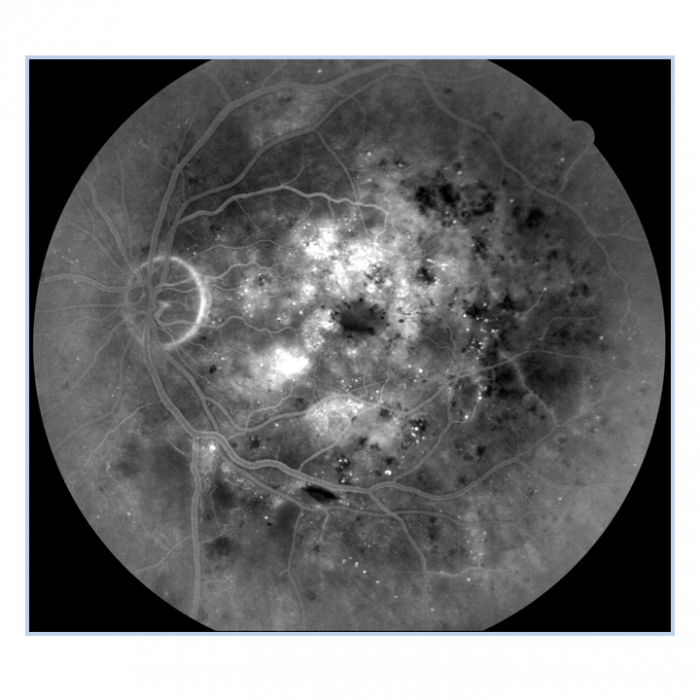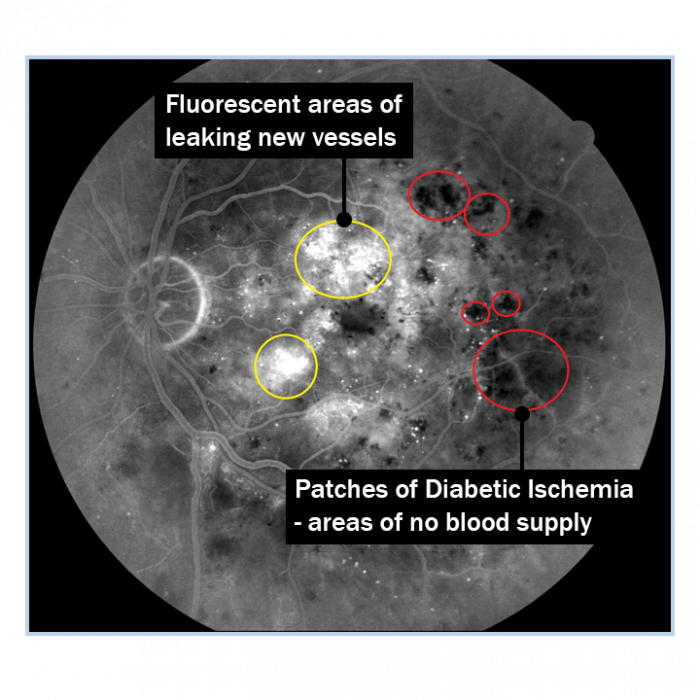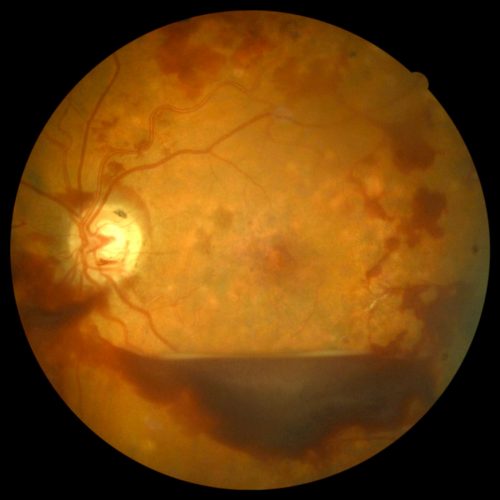Diabetic retinopathy occurs when the tiny blood vessels nourishing the retina (the light-sensitive tissue inside the eye) are damaged. These vessels can then bleed and leak fluid causing the retina to swell. As with macular degeneration and vein occlusions, swelling of the retina damages the function of the vision cells thus causing vision to deteriorate.

Retinal Photo of diabetic retinopathy – haemorrhages & exudates. OCT scan from the same patient showing macula oedema caused by diabetic retinopathy

What are the symptoms of Diabetic Retinopathy?
Symptoms include blurred vision, difficulty reading, floaters and distorted vision. Early detection is essential to preserve your vision.
Who is at risk?
Patients who have type 1 and type 2 diabetes are at risk. For this reason, a yearly eye examination is highly recommended for all diabetics. Be sure to have more frequent eye tests if you already have the signs of retinopathy, if your diabetes is poorly controlled, if you have high blood pressure or if you are pregnant.
Stages of Diabetic Retinopathy
Retinal blood vessels damaged by diabetes can cause vision loss in several ways:
- Macular oedema – caused by fragile blood vessels leaking fluid into the macula. This fluid causes the macula to become swollen resulting in blurred vision.

- Ischemic Maculopathy– caused by damaged blood vessels becoming blocked and preventing blood flow to parts of the retina. This starves the retina of oxygen and nutrition which results in vision loss. New, abnormal vessels can then grow and bleed into the retina.
Angiogram showing dark areas of diabetic ischemia where there is no blood supply (labelled in red) and fluorescent areas of leaking new vessels (labelled in yellow).


- Proliferative retinopathy – the more advanced stage of diabetic eye disease. Fragile, abnormal blood vessels grow and bleed into the jelly (vitreous) of the eye. If left untreated, scar tissue can grow on the surface of the retina and cause a retinal detachment and/or permanent loss of vision.

Treatment of Diabetic Retinopathy
Treatment for severe retinopathy and/or macular oedema requires either laser treatment or intravitreal injections into the eye. Surgery to the eye (vitrectomy) may also be needed in severe cases.
During the early stages of diabetic retinopathy it is important to have regular eye checks. To prevent progression of diabetic retinopathy and vision loss it is crucial for diabetics to have good control of their blood sugar levels, blood pressure and cholesterol. Healthy diet and regular exercise are essential.
